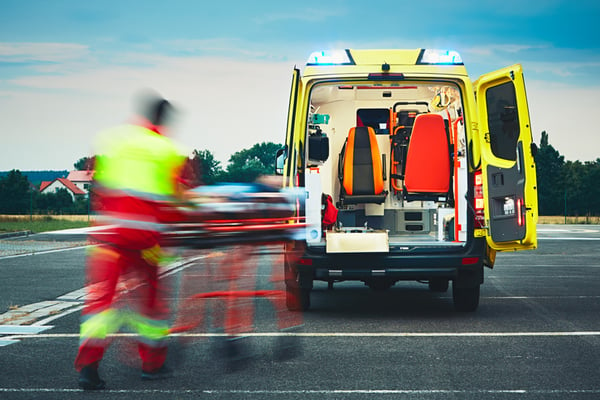
Airway obstructions are common and potentially lethal emergencies, especially among vulnerable populations such as children and geriatrics. Obstruction from a foreign body is the most common airway obstruction in young children. Among geriatrics, obstructive airway diseases, dysphagia, and aspiration are more prevalent. The odds of airway obstruction increase with age. One study of geriatric patients found that at least 10% of seniors who undergo spirometric studies may have an airway obstruction.
Airway obstructions necessitating suctioning are often traumatic or high-stress events. Seconds count. Yet many first responders may delay suctioning if they are out of practice, unskilled, or unsure whether suctioning is safe or appropriate. Prompt suctioning protects the airway and can prevent catastrophic morbidities such as brain damage and lung infections. As such, first responders and the agencies for which they work must prioritize training. Regular drills can help first responders become more comfortable with this potentially life-saving procedure.
When Is Suctioning Necessary?
Any time a patient is unable to clear their own airway or is at risk of aspiration—such as when continuously vomiting in a state of altered consciousness—suctioning may be appropriate. The primary indicators for suctioning include:
- Excessive secretions that the patient cannot clear on their own
- A visible or suspected airway blockage
- Suspected aspiration
- Crackling sounds when breathing
- Inability to cough
- Signs of respiratory distress
- Decrease in SP02
How Delaying Suctioning Harms Patients
A wait-and-see approach is not appropriate when a patient shows clear indications that they need to be suctioned. The risks of delayed suctioning include:
- Hypoxia and its attendant morbidities. In neonates, hypoxia is especially dangerous and can cause catastrophic brain damage.
- Cardiovascular damage.
- Psychological and physical trauma.
The specific risks of delayed suctioning heavily depend on the patient’s overall health and the reason for suctioning. First responders should know that delaying suction never improves outcomes. Moreover, though some medical conditions necessitate a cautious approach to suctioning, there is no medical condition that is an absolute suctioning contraindication.
Aspiration provides a good case study for the importance of prompt suctioning. Aspiration mortality rates are as high as 70 percent in the most vulnerable populations. How a first responder handles aspiration is a major predictor of patient outcome. Patients who have aspirated are significantly more likely to survive when promptly suctioned, even when they have other diseases or risk factors. Several studies have found that aspiration mortality is directly correlated with the volume and content of fluid that is aspirated. Promptly suctioning a patient reduces aspirate volume, reducing the risk of infection and other morbidities.
The Right Suction Matters
One of the biggest barriers to proper suctioning is issues with suctioning equipment. Some first responders find their onboard suction machines difficult or intimidating to use. Others fumble around looking for the right attachment or a backup battery at the last minute. A few simple equipment management strategies make prompt suctioning easier:
- Store all attachments with the suction machine.
- Promptly dispose of used disposables rather than stuffing them in a corner.
- Keep sterilization and other hygiene equipment with the suction machine.
- Test the suction machine daily, and store a backup battery with battery-powered machines.
- Invest in a portable emergency suction machine. These machines are easy to transport patient-side and should be a part of your EMS trauma kit.
The right suction machine is versatile and easy to use, makes suction safer, and delivers reliable suction. For help selecting the perfect emergency suction machine for your agency, download our free guide, The Ultimate Guide to Purchasing a Portable Emergency Suction Device.
















